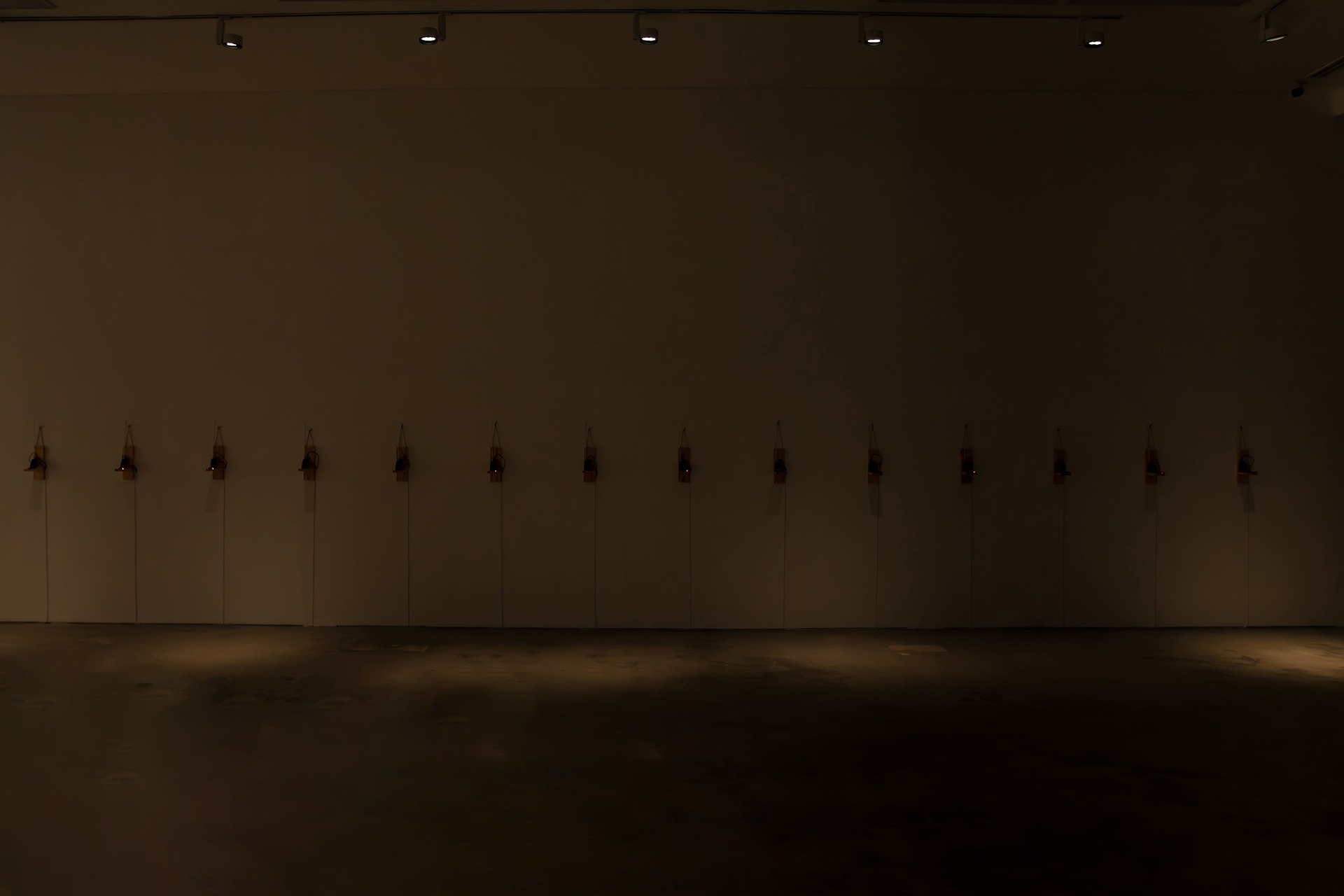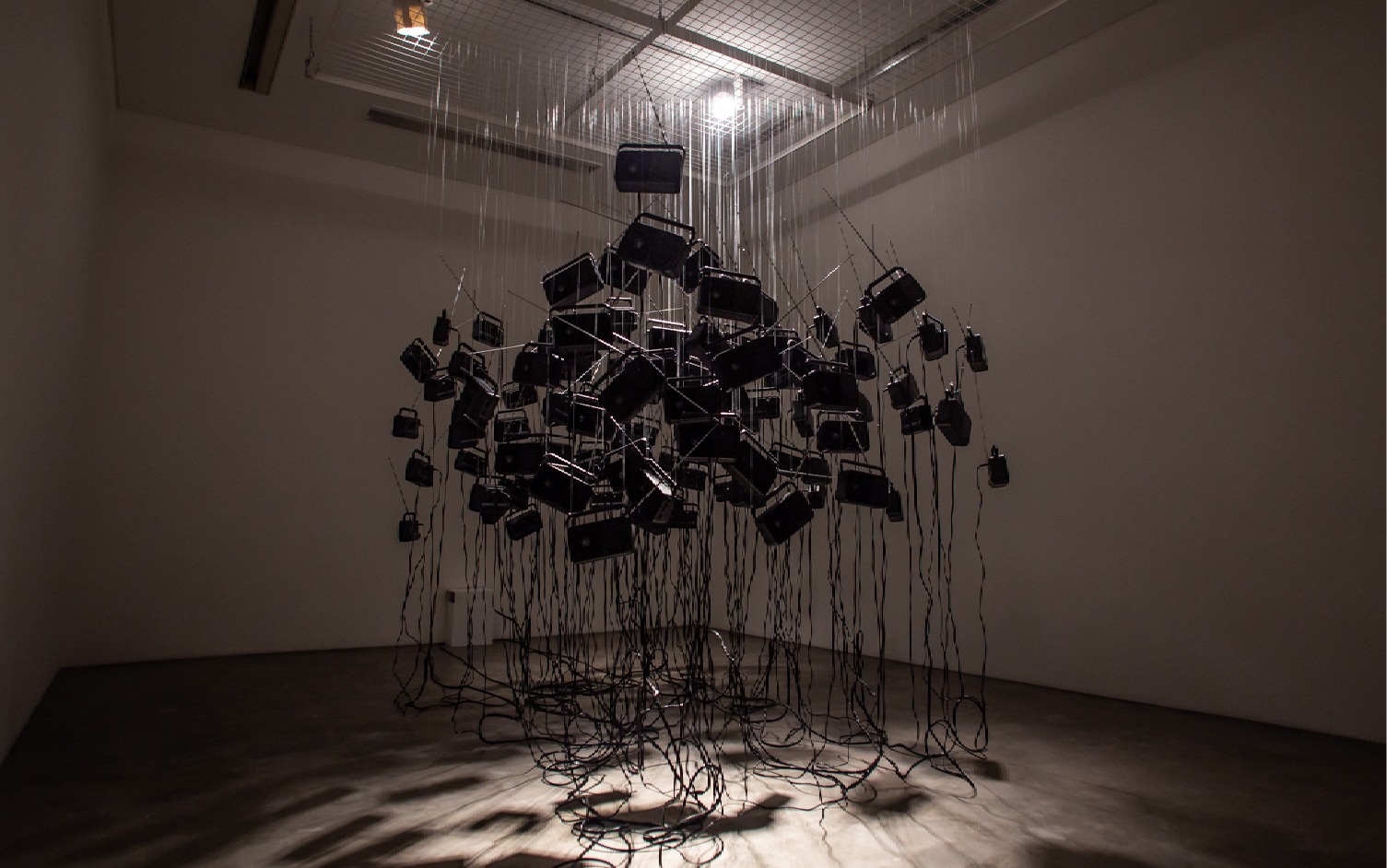
Everyday is Like Sunday
Corinne de San Jose
Silverlens, Manila
About
Everyday is Like Sunday is Corinne de San Jose's 8th solo exhibition with the gallery, marking her return to Manila after her fellowship in New York at the Asian Cultural Council and her residency at Civitella Ranieri Visual Arts Residency in Italy.
Corinne de San Jose responds to a growing dissonance in traditional strongholds of meaning — faith, science, institutions — by turning to silence as both an act of resistance and a form of refuge. Through a collection of sound-based works that transcend conventional notions of narrative and composition, she proposes an alternative way of holding belief, allowing silence to create the space where a shared sense of meaning might be recovered in an increasingly loud and fragmented world.
Is silence merely the absence of sound? Can it only be found in the inaudible, the muffled, or the voiceless? Or can it assume other forms, be captured, shaped, and reframed to take on an active, palpable presence? Corinne De San Jose confronts the blaring noise of contemporary life with a call to heed and take pause, offering a moment of refuge and quiet resistance.
Uncertainties brought about by recent events (church scandals, political corruption, corporate fraud, war) have gradually eroded our belief in existing systems that no longer provide comfort, answers, or stability. A post-religious, increasingly tribal world is emerging, marked by growing pockets of distrust casting doubt even on long-standing tenets of science. Likewise, the cult of high productivity has steadily encroached on all aspects of our lives. Sundays, traditionally reserved for rest, family, church, doing laundry, cleaning the house, preparing meals, and watching the game—are now filled with activities meant to hustle, keep up, or stay ahead. High-performance culture has blatantly co-opted Eastern spiritual practices, not for gentler purposes but to remain clearheaded in vanquishing rivals. They meditate to dominate; stay fit to endure longer at the top.
Against this hurried and restless backdrop, De San Jose offers a quiet intervention. The exhibition space itself takes on the aura of a sacred space, drenched in imperceptible hums of healing, stillness, and calm. Here, silence in its varied forms takes center stage, hinting at its creative and generative potential. It is neither void nor empty but energized and populated with residues: signals beyond the threshold of hearing, frequencies that slip past human detection, recordings transmitted elsewhere, all oscillating between presence and absence, the unseen yet felt.
There’s a lineage of conceptual and minimalist art that can be traced through John Cage’s 4’33’’, itself influenced by Robert Rauschenberg’s monochrome White Paintings. A modernist composition met with shock and controversy in its debut, its score instructs performers not to play their instruments for the duration of four minutes and thirty-three seconds. The audience instead hears only the ambient sounds of the room. Cage drew from his studies on Zen Buddhism, which holds emptiness as great potential and silence as a means to reflect on our surroundings and our own minds. He described Rauschenberg’s white paintings, which proved crucial to his understanding of silence, as ‘airports for lights, shadows, particles’, potent and receptive surfaces that respond to their surroundings.
Yet while Cage and Rauschenberg’s works frame silence and emptiness as open, responsive fields shaped by chance and the environment, De San Jose approaches silence through the mediation of technology and sound itself. She does not conjure an empty field, but an atmosphere charged and dense with intent. And while the works in the show draw from meditative traditions and spiritual practices, there are no outward pleas for peace, love, or cosmic harmony, if there ever was, it remains well veiled. They seem to propose a more grounded kind of belief, alert and aware of contradictions.
While critical of the noise and distraction of contemporary digital culture, she does not reject technology; instead, she willfully embraces machines. She reaches back to older, more analog forms: shortwave radios, vinyl record players, handmade speaker enclosures. These machines allow De San Jose to isolate and amplify the “dead wax” on vinyl records, those final grooves that contain no music but may still carry messages. They let her inhabit unused radio signals, transmitting recorded soundscapes across the airwaves. They enable her to play a set of frequencies filtered through water, revealing their presence through vibration and movement.
De San Jose is not proposing a singular answer. Her approach is iterative, structured around groupings, arrays, and repetitions, like unraveling a complex knot by tugging at many loose threads. Each piece may seem reticent on its own, but together they create a resonant, vibrant field. In Everyday is Like Sunday, her works muster a collective presence, gathering into a chorus of silences that offers pause and reprieve.
– Gary-Ross Pastrana
Corinne de San Jose (b. Bacolod, Philippines; lives and works in Manila, Philippines) is an award-winning film sound designer and multidisciplinary artist, whose works deal predominantly in the photographic realm. Her images, whether animated or static, are heavily anchored in processes of time – fluid, malleable, and experiential. There is both a self-reflexively sculptural and performative aspect to de San Jose’s work as she documents varieties of alteration through her recurring subjects, such as the female body, whilst analysing how it changes them. De San Jose’s visual aesthetic is principally impacted by sound. Specifically, silence in relation to noise as she orchestrates pieces that boast quietude in an increasingly deafening world. Furthermore, the temporal and rhythmic idea of repetition, incorporating visual grids as a method to manage and organize time and progressions in storytelling.
Installation Views
Works




